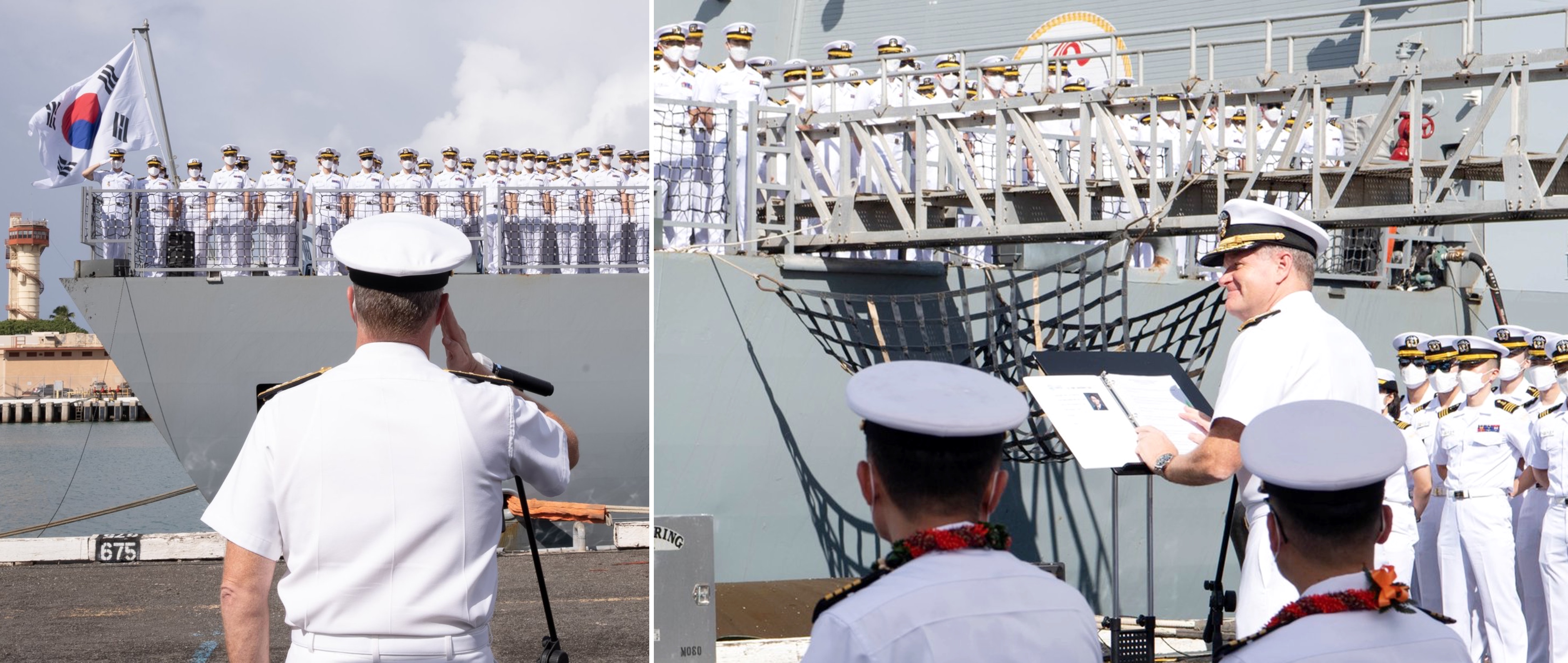On Nov. 30, naval forces from the United States, Australia, Germany, Japan, and Canada concluded ANNUALEX 2021, a nine-day multilateral, multinational annual joint military exercise held in the Philippine Sea.
The five participating navies included the Royal Australian Navy (RAN), Royal Canadian Navy (RCN), German Navy (GMN), Japan Maritime Self-Defense Force (JMSDF), and the U.S. Navy. Thirty-five ships and dozens of fighter jets joined the exercise.
A ready force to deter aggression and guarantee regional peace
Vice Adm. Karl Thomas, commander of the U.S. 7th Fleet said, “Cooperation among like-minded countries and regional partners underscores our commitment to high seas freedoms and the rule of law, which is imperative to ensure a free and open regional order.”
According to a U.S. Pacific Fleet press release from the Philippine Sea, the focus of this year’s ANNUALEX was to strengthen collective readiness and maritime superiority.
The U.S. Pacific Fleet press release stated, “Training conducted during the exercise included enhanced planning, advanced maritime communication operations, anti-submarine warfare operations, air warfare operations, live-fire gunnery events, replenishments-at-sea, cross-deck flight operations, and maritime interdiction operations.”
Success
You are now signed up for our newsletter
Success
Check your email to complete sign up
According to Rear Admiral Dan Martin, the commander of Carrier Strike Group (CSG) 1, these operations are part of the U.S. Navy’s routine presence throughout the Indo-Pacific.
“As a multinational team, we can deter aggression, guarantee regional peace and stability, and remain a skilled and ready force, able to respond to any regional crisis or contingency,” Adm. Martin said.
Germany joined the exercise for the first time in 20 years
It appears as though China’s provocative actions toward its neighbors have only drawn the allies closer. Besides the increased collaboration between allied countries demonstrated by AUKUS, America’s security partnership with the UK and Australia, other countries have also joined the league.
Germany’s frigate FGS Bayern (F 217) participated in the exercises in the Philippine Sea. Later, Tulsa had an opportunity to host Bayern crew members for ship tours while moored at the Naval Base in Guam.

Sub Lieutenant Tim Hitchcock, Officer of the Watch HMAS Brisbane of Royal Australian Navy, said that “HMAS Brisbane has been involved in anti-submarine warfare, damage control operations, flying operations, and maritime maneuvers.”
US Military cooperation with South Korea, Taiwan, and Japan strengthened
On Dec. 1, U.S. Navy Adm. Samuel Paparo, commander of the U.S. Pacific Fleet, met with Wang Geon, the Republic of Korea’s Navy midshipmen aboard the ROKS (DDH 978) at Pearl Harbor as part of the destroyer’s training cruise visit.

Taiwan has secretively recruited expertise and parts from at least seven countries to build submarines to deter a Chinese Communist Party (CCP) invasion. The project was codenamed, “Sea Prosperity.”
Taipei’s chief foreign weapons supplier, the U.S., has provided key tech, including combat-system components & sonars to the island.
Defense companies from the UK, which like America operate a fleet of nuclear-powered ballistic missile and attack submarines, have provided crucial support as well.
Taipei also succeeded in hiring engineers, technicians & former naval officers from at least five other countries including Australia, South Korea, India, Spain, and Canada. Based at a shipyard in the port city of Kaohsiung, the experts advise the Taiwanese navy.
Communist China’s military aggression around the South China Sea, especially muscle-flexing in the Taiwan Strait in recent months, has been met with strong pushback by global powers.
.jpg)














